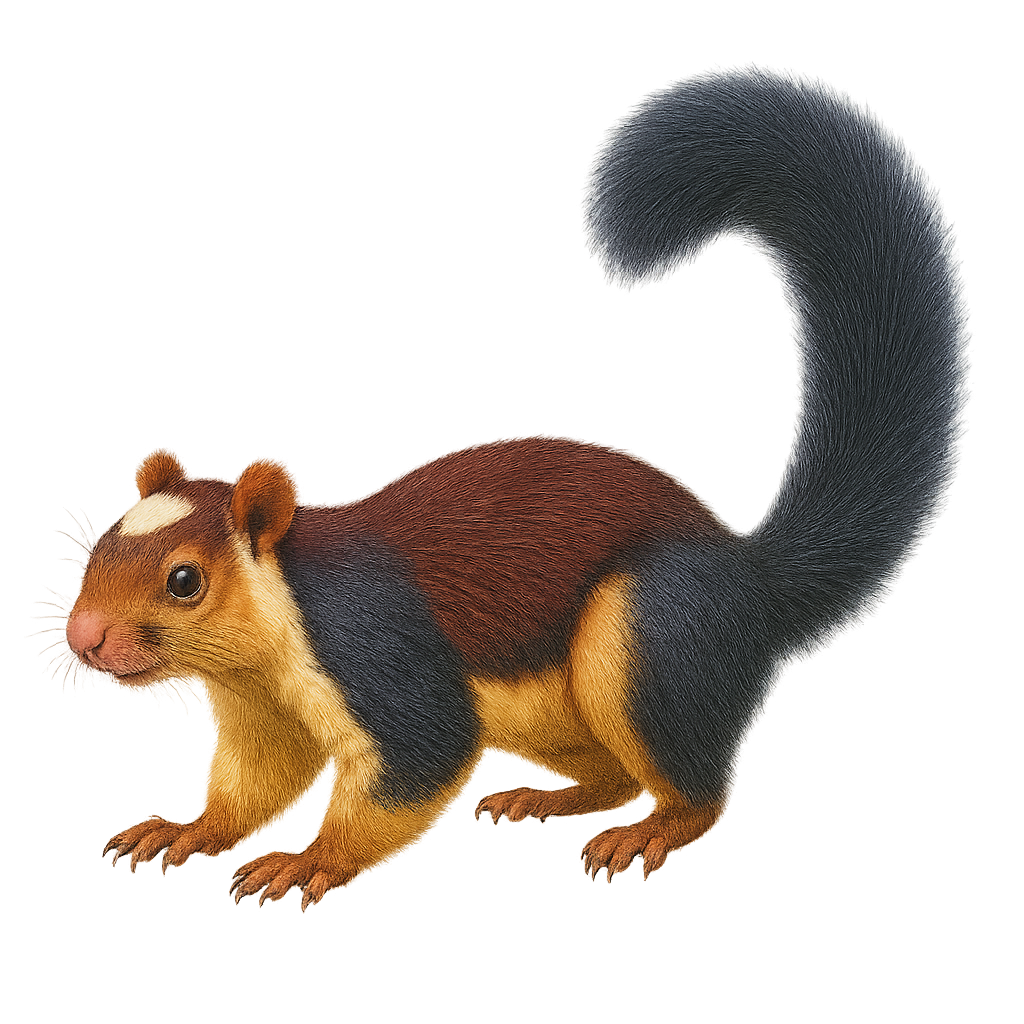Your wildlife photography guide.
Explore the indian giant squirrel in detail, study its behavior, prepare your shots.
Where to observe and photograph the indian giant squirrel in the wild
Learn where and when to spot the indian giant squirrel in the wild, how to identify the species based on distinctive features, and what natural environments it inhabits. The WildlifePhotographer app offers tailored photography tips that reflect the indian giant squirrel’s behavior, helping you capture better wildlife images. Explore the full species profile for key information including description, habitat, active periods, and approach techniques.
Indian Giant Squirrel
Scientific name: Ratufa indica

IUCN Status: Least Concern
Family: SCIURIDAE
Group: Mammals
Sensitivity to human approach: Suspicious
Minimum approach distance: 10 m
Rut period: December to February
Gestation: 28-35 jours
Births: January to March
Habitat:
Tropical rainforests, deciduous forests, mixed forests
Activity period :
Primarily active during the day, with peak activity in the morning and late afternoon.
Identification and description:
The Indian Giant Squirrel, Ratufa indica, is an impressive rodent known for its size and vibrant colors. It can grow up to a meter long, including its tail, and sports a coat with varying shades from brown to black, with hints of cream and rust. This squirrel is arboreal, spending most of its time in the trees of India's tropical rainforests. It primarily feeds on fruits but also consumes flowers, bark, and insects. Its behavior is generally solitary, although it can be seen in pairs during the breeding season. With its long tail, it maintains perfect balance when leaping from tree to tree.
Recommended lens:
400 mm – adjust based on distance, desired framing (portrait or habitat), and approach conditions.
Photography tips:
To photograph the Indian Giant Squirrel, it is advisable to use a telephoto lens of at least 400mm to capture detailed images without disturbing the animal. Look for areas where the squirrels are active, such as tropical rainforests, and be patient. Observe their behavior to anticipate their movements and adjust your position accordingly. The natural light of the morning or afternoon is ideal for capturing vibrant colors and interesting contrasts.
The WildlifePhotographer App is coming soon!
Be the first to explore the best nature spots, track rutting seasons, log your observations, and observe more wildlife.
Already 1 449 wildlife lovers subscribed worldwide

